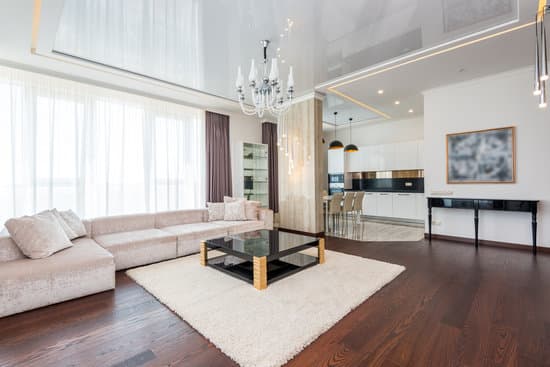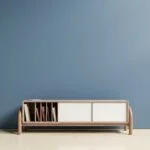When browsing through a home decor store, have you ever wondered who exactly purchases all these items? Understanding the target audience of home decor buyers is crucial for businesses in the industry. In this blog post, we will delve into the demographics of home decor buyers to provide valuable insights for sellers and enthusiasts alike.
Defining the target audience is an essential step in any marketing strategy. By identifying the specific demographics that make up the majority of home decor buyers, businesses can tailor their products and marketing efforts accordingly. Age groups, income levels, and lifestyles play significant roles in determining who purchases home decor items.
In recent years, millennials have become a key demographic in the home decor market. With social media influencing their taste and style choices, this generation has shown a preference for minimalistic trends and sustainable options. We will explore how their purchasing decisions are shaped by these factors and discuss the impact millennials have on the industry.
Defining the Target Audience
Understanding the target audience is crucial for any business, and the home decor industry is no exception. To effectively market and sell home decor items, it is essential to know who exactly purchases these products. This section aims to highlight the importance of identifying the demographics of home decor buyers and discuss the various age groups, income levels, and lifestyles that make up this consumer base.
Home decor buyers encompass a wide range of age groups, with each group having its own preferences and priorities. Millennials, in particular, have been identified as a significant segment of home decor buyers. This younger demographic favors modern and minimalistic designs influenced by social media platforms such as Pinterest and Instagram. They value sustainability and are more likely to choose eco-friendly options when decorating their homes.
Another important group to consider is young professionals who are starting to set up their first homes. Convenience, quality, and affordability are key factors that influence their buying decisions. As they navigate their careers and personal lives, this group often prioritizes functional items that offer practicality without sacrificing style.
Families and parents also make up a substantial portion of home decor buyers. Their concerns revolve around creating a comfortable yet child-friendly environment. Functionality, durability, and designs that can withstand wear-and-tear become critical considerations when purchasing home decor items.
In addition to these main demographics, interior design enthusiasts and DIYers play an influential role in the home decor industry. These individuals seek unique pieces that allow them to personalize their living spaces according to their tastes and preferences. Their choices not only impact what they buy but also shape market trends within the industry.
By understanding the target audience’s demographics within the home decor industry, businesses can tailor their marketing strategies to meet specific consumer needs effectively. Whether it be targeting millennials through social media platforms or catering to families with child-friendly designs, businesses must adapt their approach to resonate with different buyer personas in order to thrive in the market.
Understanding the Preferences of Millennial Home Decor Buyers
Millennials, born between 1981 and 1996, are a significant demographic when it comes to home decor purchases. As this age group enters the stage of setting up their own homes and establishing their personal style, understanding their preferences becomes crucial for businesses in the home decor industry. Millennials have distinct taste and style choices influenced by factors such as social media, minimalistic trends, and sustainability.
The Influence of Social Media
One of the key factors shaping the preferences of millennial home decor buyers is the influence of social media platforms such as Instagram and Pinterest. These platforms provide constant exposure to aesthetically pleasing interiors, design ideas, and home decor trends. As a result, millennials are often inspired to create visually appealing spaces that reflect their individuality.
This influence extends beyond simply observing decor ideas – social media also enables millennials to engage with brands directly. By following their favorite home decor influencers or discovering new products through targeted ads, millennials can easily access buying options tailored to their specific tastes.
Embracing Minimalism and Sustainability
Another factor impacting millennial home decor preferences is the rise of minimalistic trends and sustainable options. Many millennials opt for clean lines, neutral color palettes, and clutter-free spaces that promote both relaxation and functionality. This preference for simplicity often translates into a high demand for versatile furniture pieces that can adapt to various living arrangements.
Furthermore, sustainability has become increasingly important for this eco-conscious generation. Millennials actively seek out environmentally friendly materials and ethically produced products when making purchase decisions. From upcycled furniture to organic textiles, businesses catering to millennial buyers must prioritize sustainable practices in order to appeal to this market segment.
Understanding these unique taste and style choices allows businesses in the home decor industry to effectively tailor their products, marketing strategies, and customer service experiences specifically for millennial buyers. By aligning with their preferences for social media engagement, minimalistic trends, and sustainable choices, businesses can establish meaningful connections with this influential demographic and ensure long-term success in the market.
Exploring the Buying Habits of Young Professionals
The Rise of Young Professionals in the Home Decor Market
Young professionals, typically aged between 25 and 40, are an important demographic in the home decor market. As they transition into adulthood and start to establish their own homes, they become increasingly interested in creating a space that reflects their personal style and values. This group of buyers is known for their desire to invest in quality products that offer convenience, functionality, and affordability.
The Importance of Convenience and Time-Saving Solutions
For young professionals who often lead busy lives with demanding careers, convenience plays a significant role in their buying decisions. They are more likely to prefer online shopping platforms that provide a seamless experience, allowing them to browse a wide variety of options from the comfort of their own homes. Additionally, subscription services that offer regular deliveries of curated home decor items have gained popularity among this demographic as they provide both convenience and a sense of surprise.
Time-saving solutions also appeal to young professionals who value efficiency. In terms of furniture and home decor purchases, they tend to prefer items that are easy to assemble or require minimal maintenance. This includes modular furniture pieces that can be easily rearranged or multi-functional items that serve multiple purposes.
Quality and Affordability: Striking the Right Balance
Young professionals place importance on the quality of the products they purchase for their homes. They prioritize durability over low cost, as they seek long-term investments rather than disposable items. Products made from sustainable materials or those with eco-friendly certifications are particularly appealing to this environmentally-conscious demographic.
While quality is crucial, young professionals are also conscious of balancing their budgets. Many are starting out on limited incomes or saving for other financial goals such as buying a house or starting a family. Therefore, affordability is an essential factor in their buying decisions.
Furthermore, this demographic tends to do thorough research before making a purchase. They compare prices, read reviews, and seek out discounts or promotions. Home decor companies that offer competitive pricing, transparent product information, and readily available customer support will often have an advantage in attracting the business of young professionals.
Understanding the buying habits of young professionals is key for home decor sellers looking to target this demographic effectively. By providing convenient shopping options, time-saving solutions, quality products at affordable prices, and emphasizing sustainability, businesses can appeal to the unique preferences and needs of this influential group of buyers.
Catering to the Home Decor Needs of Families and Parents
Families and parents have specific concerns and preferences when it comes to home decor. When buying furniture or decorative items for their homes, functionality, durability, and child-friendly designs are important factors that influence their purchasing decisions.
One way to cater to the needs of families and parents is by offering furniture and decor pieces that are specifically designed with children in mind. This includes features such as rounded corners, non-toxic materials, and easy-to-clean fabrics. Parents look for items that can withstand the wear and tear of everyday family life while also being safe for their children.
Another consideration for families is storage options. With children often comes an abundance of toys, books, and other belongings that need to be organized. Home decor sellers can offer furniture pieces with built-in storage solutions like drawers or shelves to help families keep their spaces clutter-free.
In addition to functionality and durability, families also appreciate designs that are both stylish and child-friendly. Home decor sellers can provide options that appeal to both adults’ aesthetics and children’s interests. For example, offering decorative wall art or bedding with playful patterns or characters can create a fun and inviting atmosphere for kids while still fitting into the overall design scheme of the home.
By understanding the unique needs of families and parents, home decor sellers can better cater to this demographic. Providing functional, durable, and child-friendly options in a variety of styles will make it easier for families to find items that meet their requirements without compromising on style.
The Influence of Interior Design Enthusiasts and DIYers
Interior design enthusiasts and DIYers play a significant role in the home decor industry. These individuals are driven by their passion for creating personalized living spaces and often have a keen eye for aesthetics. Their influence extends beyond their own homes, as they inspire others by sharing their creative ideas and experiences through various platforms such as social media, blogs, and video tutorials.
One of the main motivations for interior design enthusiasts and DIYers is the desire to personalize their living spaces. They see their homes as an extension of themselves and view decorating as a way to express their unique style and personality. This group tends to prioritize individuality and originality, seeking out one-of-a-kind pieces that cannot be found in mainstream stores.
Social media platforms like Instagram and Pinterest have played a significant role in shaping the buying habits of interior design enthusiasts and DIYers. These platforms serve as sources of inspiration, allowing individuals to discover new trends, explore different styles, and connect with like-minded individuals. Many home decor businesses have capitalized on this trend by actively engaging with these online communities, showcasing their products in visually appealing ways, and collaborating with influencers to reach a wider audience.
In order to target the influence of interior design enthusiasts and DIYers successfully, companies must understand their preferences when it comes to home decor. These individuals often value sustainability, craftsmanship, and unique designs. They appreciate products that are made from high-quality materials with meticulous attention to detail. Additionally, they are more likely to support small independent businesses that offer handmade or customizable options.
To summarize, interior design enthusiasts and DIYers are an essential demographic within the home decor industry. Their passion for personalization drives them to seek out unique pieces that align with their individual style preferences. By understanding the preferences of this influential group, businesses can adapt their marketing strategies to cater specifically to them – ultimately increasing sales and brand loyalty.
| Influences | Preferences |
|---|---|
| Social media (Instagram, Pinterest) | One-of-a-kind pieces |
| Inspiration and trends | Sustainability, craftsmanship |
| Online communities | High-quality materials, unique designs |
| Collaborations with influencers | Made from small independent businesses |
Targeting the Affluent
When it comes to the world of home décor, there is a distinct market for luxury buyers who demand exclusivity and premium quality. Targeting the affluent demographic can be a lucrative opportunity for businesses in the home decor industry. Luxury home decor buyers have unique demands and expectations that must be catered to in order to capture their attention and make sales.
One of the key factors that luxury home decor buyers prioritize is exclusivity. They want items that are not readily available to everyone and that set their homes apart from others. Limited edition or custom-made pieces can be highly desirable to this demographic, as they value uniqueness and rarity in their purchases.
Additionally, craftsmanship is crucial for luxury buyers. They often seek out products that showcase impeccable attention to detail and are made with high-quality materials, ensuring longevity and showcasing their refined taste.
The price point of luxury items may seem out of reach for many, but for affluent buyers, it signifies prestige and status. Being able to invest in high-end home decor is a symbol of their success and allows them to create an environment that represents their wealth and sophistication. However, affordability should not be overlooked entirely.
While these buyers are willing to spend more on luxury pieces, they still expect value for their money. It is important for businesses catering to this market to provide top-notch customer service, follow-up maintenance options, and warranties or guarantees on their products.
Understanding the preferences of luxury home decor buyers is essential for businesses looking to tap into this segment of the market successfully. By offering exclusive designs with exceptional craftsmanship while still providing value for money, businesses can attract the attention and loyalty of affluent consumers seeking statement pieces for their homes.
Niche Markets
Eclectic and vintage home decor has gained significant popularity in recent years, attracting a unique group of buyers who appreciate one-of-a-kind pieces and have a strong desire for nostalgia and individuality in their homes. This niche market consists of individuals who value the history and story behind each item, seeking to create a space that reflects their personal style and stands out from mainstream trends.
Understanding this specific target audience is crucial for businesses in the home decor industry looking to cater to their needs effectively.
So, who buys eclectic and vintage home decor? Here are some key characteristics of this niche market:
- Unique taste: Buyers of eclectic and vintage home decor have a distinct sense of style that goes beyond following current trends. They are drawn to items with character, whether it’s an antique piece passed down through generations or a quirky find from a flea market.
- Love for nostalgia: Many individuals in this niche market enjoy surrounding themselves with items that evoke memories from the past. They may have a fondness for retro designs or sentimental objects that remind them of childhood.
- Emphasis on individuality: Individuality is highly valued among buyers of eclectic and vintage home decor. These individuals often seek out pieces that are not mass-produced but instead reflect their personal style and add a unique touch to their living spaces.
- Sustainability conscious: Eclectic and vintage home decor attracts buyers who prioritize environmental sustainability by repurposing and recycling pre-loved items instead of contributing to the production of new goods.
To effectively target this niche market, businesses should consider strategies such as:
- Curating unique collections: Offer a wide range of eclectic and vintage items that cater to various tastes within this niche market. By sourcing items with different styles, eras, and price ranges, businesses can attract a broader audience while still maintaining a focus on uniqueness.
- Building an online presence: Utilize social media platforms like Instagram or Pinterest to showcase curated collections and attract buyers who are actively seeking inspiration and unique home decor pieces.
- Providing detailed product information: Highlight the history, origin, and unique qualities of each item to appeal to the nostalgia-seeking nature of this target audience. Helping them understand the background and story behind each piece can create a stronger emotional connection that drives their purchasing decision.
Conclusion
In conclusion, understanding the demographics and preferences of home decor buyers is crucial for businesses looking to thrive in the industry. Throughout this blog post, we have explored various buyer demographics and their unique buying habits. From millennials with their focus on social media influences and minimalistic trends, to young professionals seeking convenience, quality, and affordability, each demographic brings its own set of preferences and considerations when purchasing home decor.
Families and parents have specific needs for functionality, durability, and child-friendly designs. On the other hand, interior design enthusiasts and DIYers play a significant role in the market as they seek to personalize their living spaces. Luxury home decor buyers expect exclusivity, craftsmanship, and premium materials. Lastly, niche markets such as eclectic and vintage home decor cater to those who desire unique pieces that evoke nostalgia or showcase individuality.
For businesses to succeed in the home decor industry, it is essential to tailor marketing strategies to target these different buyer demographics effectively. This may include utilizing social media platforms to reach millennials or offering customization options for interior design enthusiasts. Additionally, incorporating sustainable materials for eco-conscious buyers or providing luxury options for affluent individuals can also help expand customer reach.
Ultimately, by understanding the “who” behind home decor purchases – their age groups, income levels, lifestyles, preferences, and buying habits – businesses can better position themselves in the market. Adapting marketing strategies based on these insights will enable them to connect with their target audience more effectively and meet their unique needs. By doing so, businesses can drive sales growth while establishing lasting relationships with their customers in the ever-evolving world of home decor.
Frequently Asked Questions
Who buys home decor the most?
Home decor is a popular industry, and it caters to a wide range of consumers. However, there are certain groups that tend to be more frequent purchasers of home decor items. One category that buys home decor the most is homeowners who have recently moved into a new house or apartment. These individuals often invest in new furniture, accessories, and decorative pieces to personalize their space and make it feel like home.
Additionally, young professionals who are furnishing their first homes or apartments also contribute significantly to the market for home decor. They are often focused on creating stylish and trendy living spaces that reflect their personal tastes. Finally, individuals who frequently update their interior design or follow seasonal trends may also be among the top buyers of home decor items.
How to start selling home decor items?
Starting a business selling home decor items can be an exciting venture, but it requires careful planning and execution. The first step is to determine your target market and identify the specific niche within the broader realm of home decor you want to focus on—whether it’s modern furniture, vintage accessories, or handmade crafts. Once you’ve established your niche, you need to source quality products from reputable suppliers or artisans. It’s crucial to maintain a diverse inventory with a wide selection of items that cater to various tastes and preferences in order to attract customers.
Next, set up an online presence through a website or platforms such as Etsy or Amazon Handmade. Utilize social media platforms like Instagram and Pinterest to showcase your products visually and reach potential customers. Networking with local interior designers and participating in trade shows can also help expand your customer base.
Can you make money selling home decor?
Yes, it’s possible to make money selling home decor items if you approach it strategically and manage your business effectively. The profitability of selling home decor depends on various factors such as pricing, sourcing costs, marketing strategies, competition analysis, and customer demand. By carefully selecting products with good profit margins and maintaining competitive prices while considering market trends, you can optimize your chances of making a profit.
Building a strong brand presence, creating a visually appealing online store, and utilizing effective marketing channels will help attract customers and drive sales. Additionally, providing excellent customer service and establishing a positive reputation can foster customer loyalty and promote repeat business. While success is not guaranteed, with thorough research, careful planning, and dedication to your business, there is potential for financial gain in the home decor industry.

I’m thrilled to be your companion on this exciting journey through the world of home decor and design. With a passion for turning houses into homes and a keen eye for the finer details, I’m here to help you transform your living spaces into beautiful, functional, and meaningful havens.





